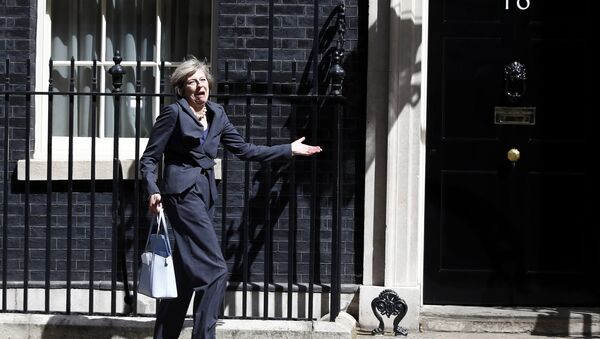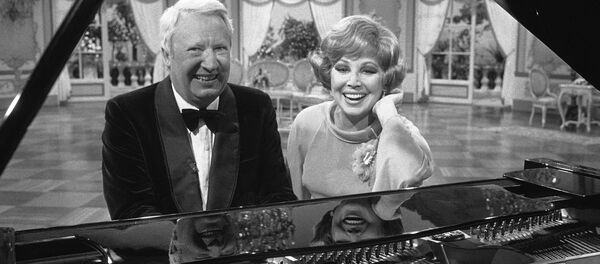But what is the 1922 Committee and can a Conservative leader survive if it falls out of favor with it?
The 1922 Committee must be looking forward to seeing Theresa May to congratulate her on her campaign. pic.twitter.com/ZoqMfZi0gE
— Wes Streeting MP (@wesstreeting) 10 June 2017
The committee takes its name from the date of a meeting — October 19, 1922 — when disaffected Conservative MPs met and decided to pull out of a coalition with the Liberal Party, which was led by Prime Minister David Lloyd George.
When @theresa_may stands before @Conservatives 1922 Committee today to beg forgiveness do you think she'll use phrase "strong & stable"?? pic.twitter.com/oAPEkXVIOo
— Pilchard the Cat (@reperioverum) June 12, 2017
But over time its composition changed and it is now made up of all Tory MPs who are not ministers (or shadow ministers, when they are in Opposition).
The 1922 Committee has an 18-member executive committee and is chaired by a senior MP.
"It's her duty to form a government as resilient as it can be in quite difficult times" Graham Brady on Theresa May #bbcsp pic.twitter.com/n5Hw9sjd8o
— DailySunday Politics (@daily_politics) June 11, 2017
Graham Brady, the MP for Altrincham and Sale West, has been the chairman since May 2010.
"What attracted you to the anti-abortion, anti-gay marriage, climate change denying DUP" — @KayBurley to Graham Brady. Lol. #GE2017 #GE17
— Paul Hosford (@PTHosford) June 9, 2017
It meets every week when Parliament is sitting and occasionally invites the party's leader or other senior figures to address it about matters which concern backbench MPs.
The press and public are not allowed into the 1922 Committee's meetings but journalists will no doubt often hover outside in the corridors of the Houses of Parliament later on Monday to see if they can pick up a sense of how the meeting went and what are Mrs. May's chances of surviving.
After calling a snap election to increase her majority and finding herself forced to go into a supply and demand agreement with the Democratic Unionist Party (DUP) she is in a desperately weak position as the Brexit negotiations loom.
On Saturday (June 10), hundreds of people marched on Downing Street to demand she resign as prime minister.
Her two joint chiefs of staff, Fiona Hill and Nick Timothy, tried to take the blame by resigning on Saturday.
Former Chancellor George Osborne described her as a "dead woman walking" and several pundits have portrayed her as a "zombie prime minister."
1922 committee is going to be a laugh. pic.twitter.com/tYRaPZjxBU
— Tony Hughes (@TheProtestBoard) 11 June 2017
The last time a Conservative prime minister was so clearly facing being replaced was in November 1956, when Anthony Eden led the party and the country into the disastrous Suez Crisis.
Sixteen British soldiers were killed and 96 wounded after Britain, France and Israel tried to seize the Suez Canal after Egyptian President Gamal Abdel Nasser nationalized it.
12 June 1897. Former Foreign Secretary and Prime Minister (1955-1957) Anthony Eden was born in Durham. pic.twitter.com/zbEhysmE0l
— Prof.Frank McDonough (@FXMC1957) June 12, 2017
On November 22, 1956 the 1922 Committee met to discuss replacing Eden, whose health had begun to fail as the pressure of the crisis began to tell on him.
At that meeting the two leading contenders, Chancellor Harold Macmillan, and Home Secretary Rab Butler, addressed the assembled Tory MPs.
Jonathan Pearson, in his book "Sir Anthony Eden and the Suez Crisis: Reluctant Gamble" wrote: "Butler gave a basic speech, while once again Macmillan seized the opportunity and dynamically addressed the meeting for 35 minutes, focusing on future policy."
We have written to the 1922 Committee to have @GregKnight installed as our new leader and PM until November pic.twitter.com/qEph1a7D2E
— Conselfservatives (@CONSERVATlVES) 10 June 2017
Eden finally stepped down in January 1957 and was replaced by Macmillan.
#throwbackthursday Chancellor Mr. Harold Macmillan in 1955 peeking inside the infamous Red box #budget pic.twitter.com/T4kxTPrSeO
— PA Images (@PAImages) March 20, 2014
In February 1975 Margaret Thatcher, who had just taken over from Edward Heath as the leader of the Conservative Party, was given a "rapturous reception" by the 1922 Committee.
In her speech, she said: "In the last few years some people have been feeling that there was an almost inevitable march towards socialism.
"But when I first came into politics there was an almost inevitable march towards the Conservative society, with most people wanting to own their own homes, taking an interest in their children's education, welcoming policies for the reduction of personal taxation, and rising to the challenge of being responsible for their own future. We must fight again to recreate that spirit."
Fifteen years later, at the height of the protests against the poll tax, Thatcher got a much rougher ride from the 1922 Committee before she eventually resigned after a leadership challenge.



